The articles of clothing worn by members of the US Navy have varied greatly over the years. Navy uniforms are designed to properly fit any scenario while maintaining the purpose and dignity of the Navy. This includes situations ranging from dinners with the president to doing burpees during PT. Here are the 7 strict facts about US Navy uniforms.
There are 6 basic US Navy uniforms
Designed for all physical, social, and professional occurrences – the uniforms laid out in Chapter 3 of the U.S. Navy rulebook contain the following: Dinner Dress Uniforms, Ceremonial Uniforms, Service Dress Uniforms, Service Uniforms, Working Uniforms, and Physical Training Uniforms.
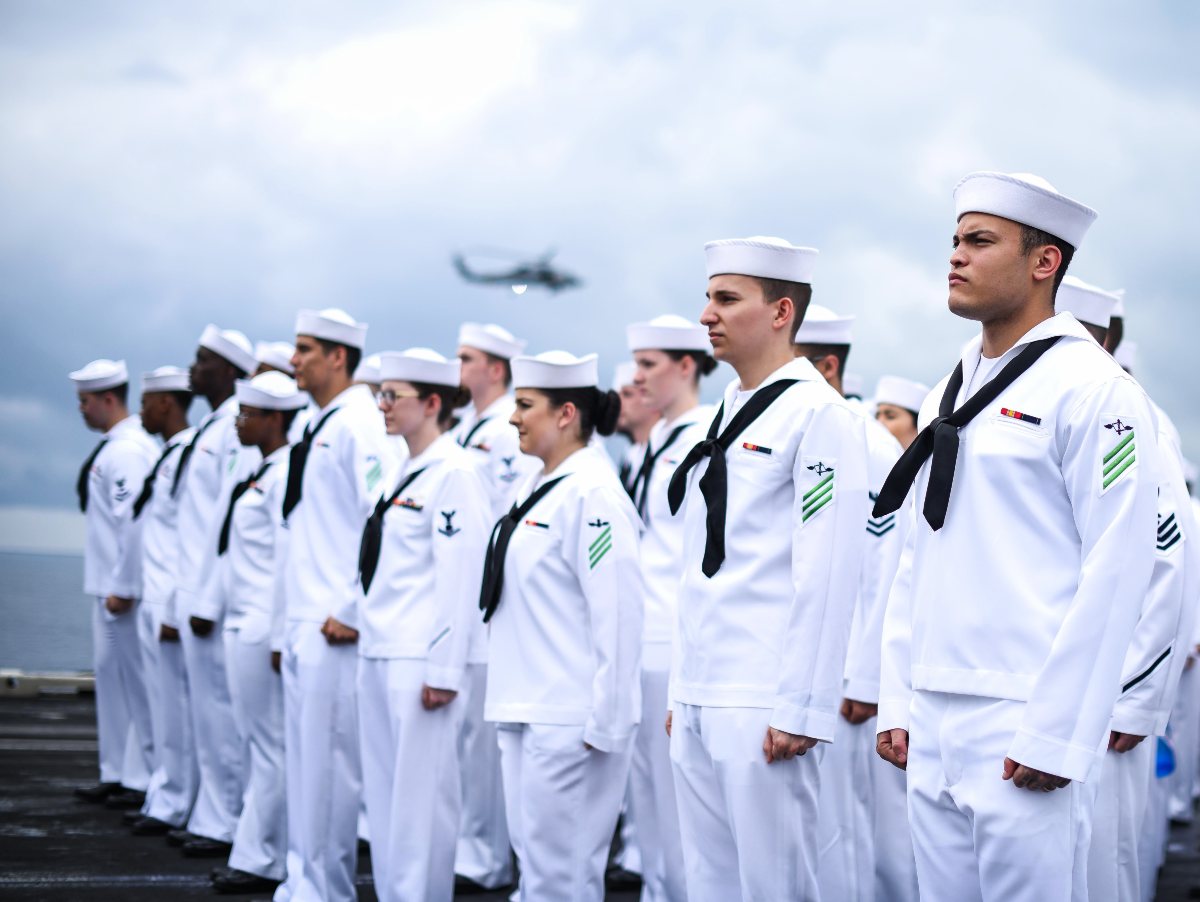
Dinner Dress Uniforms
In the Dinner Dress Uniform, there are four options for male enlisted members and five options for female enlisted members. For male and female officers, there are also five different options. So all in all, there’s 19 variations just for Dinner Dress. This dolled-up outerwear is worn to official events in which civilians would wear a black tie.
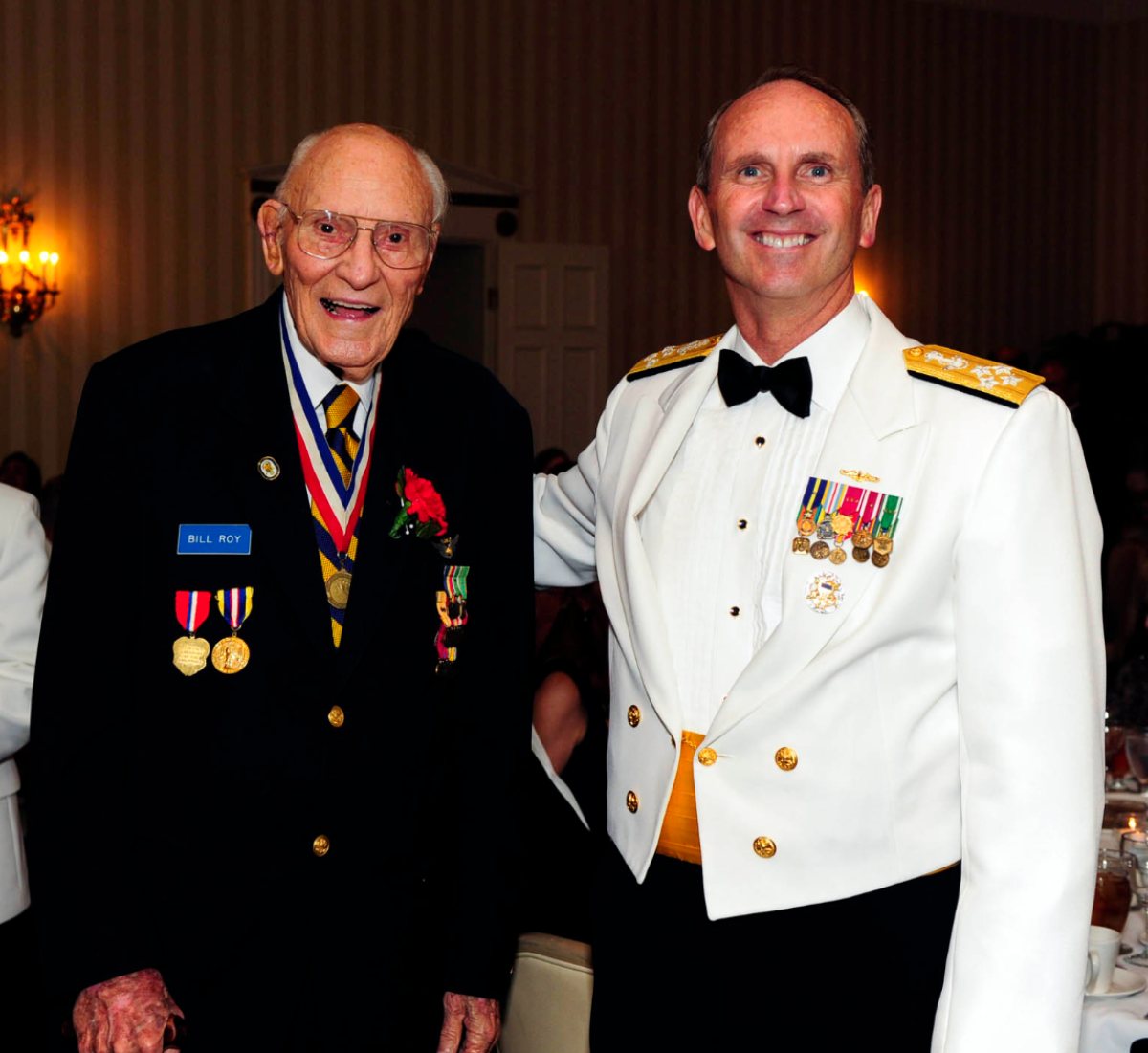
Ceremonial Uniforms
Compared the Dinner Dress, Ceremonial Dress only has nine separate options between all service members. Ceremonial Dress is to be worn when: assuming or relinquishing Command, or participating in the Ceremony; Official visits with honors as prescribed in Navy regulations; Visits of Ceremony to Foreign Men-of-War and Foreign Officials; Occasions of State, Ceremonies, and Solemnities.
The overall look here doesn’t vary that much from Dinner Dress – they’re both very official looking uniforms. The largest noticeable difference to civilians is the sword that Male Officers wear as a prescribable item.
Service Dress Uniforms
The time and place for Service Dress is described as, “For wear year-round to all official functions when Dinner Dress or Full Dress Uniforms are not prescribed and civilian equivalent dress is coat and tie.”
Again, not nearly as many variations as with Dinner Dress, but on the surface there isn’t a whole lot of difference between Dinner, Ceremonial, Service Dress uniforms – especially at the Officer level. Many of the same parts are worn interchangeably. The photo below shows the Male Enlisted Service Dress Uniform.

Service Uniforms
Unless you’re an Officer, you’ve got one option and one option only. The service uniforms, known as SU’s, are worn year round and for the male enlisted member consist of: shirt (khaki, poly/wool), trouser (black, poly/wool), black belt with silver clip and buckle, black garrison cap, black dress shoes, white undershirt, white undershorts, insignia on the collar, and ribbons. Prescribable items like scarfs, pea coats, etc. are used during cold weather.
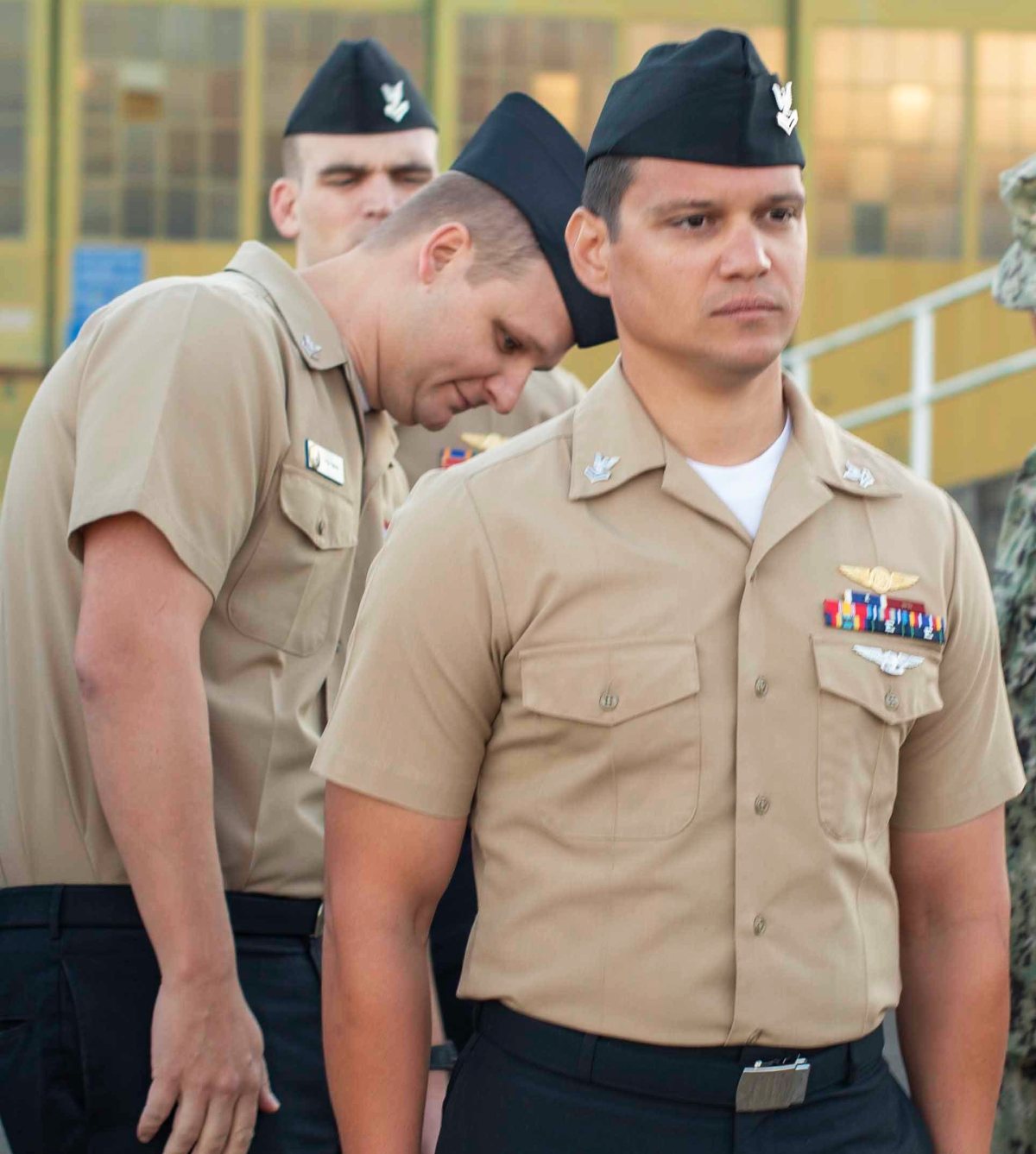
Service uniforms are worn year round for office work, watch- standing, liberty or business ashore when prescribed as uniform of the day.
Working Uniforms
Designed for everyday, physical work – the US Navy working uniform consists of three options regardless of male, female, officer, or not. Coveralls, Navy Working Uniform (NWU), and Navy Working Uniform (NWU III). The coveralls are all navy blue and, you guessed it, cover the wearer from head to toe. NWU’s are a sea-blue digi-camo outfit and the NWU III’s are a kelp-green digi-camo outfit.
The Navy is specific about when NWU’s are allowed to be worn:
“NWU wear is authorized for commuting and all normal task and associated stops (e.g. stops at child care, gas stations, off-base shopping, banking, DMV and dining) before, during and after the workday. NWUs are not a liberty uniform. After normal working hours, NWU wear is not permitted while conducting official business, when business attire is appropriate and participating in social events.”
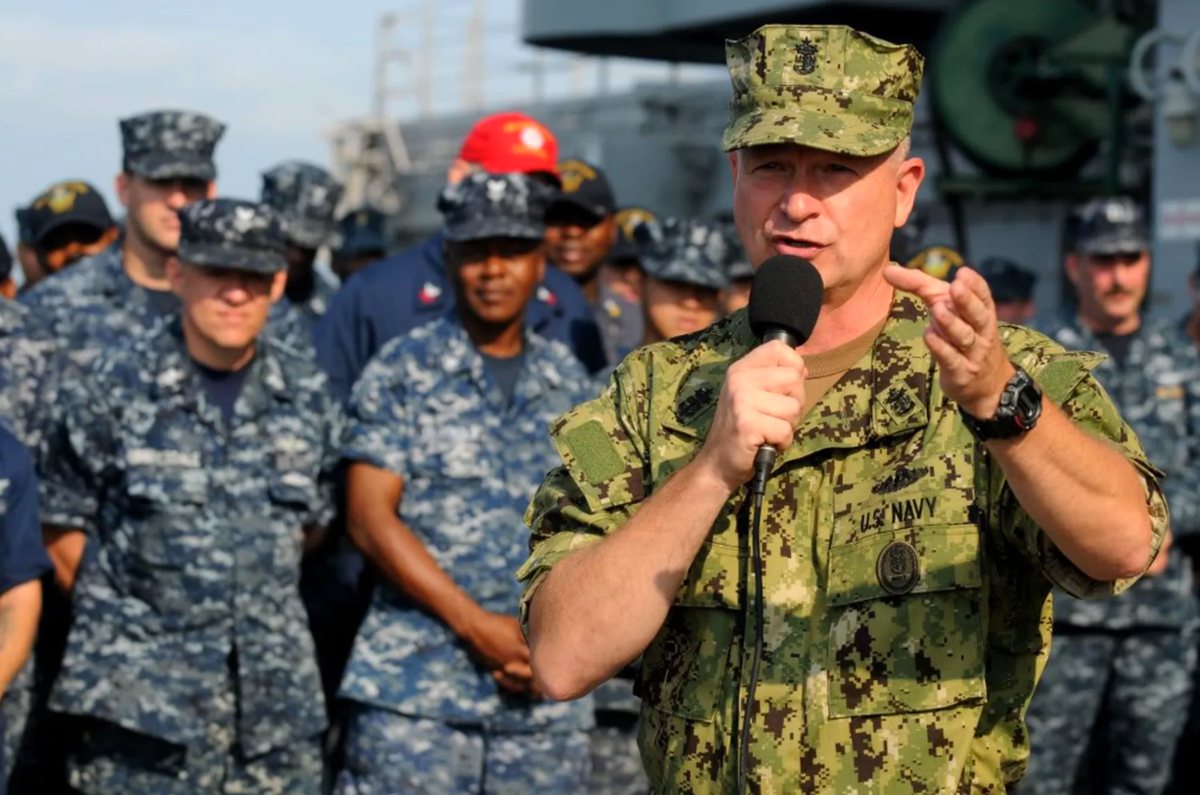
Coveralls are specifically for dirty work:
“The Navy blue coverall is designated as a dirty work component worn to perform work that would otherwise soil other Navy uniforms while performing the same task. Wearing of the Navy blue coveralls is limited to the immediate area of assignment in which the work is to be performed.”
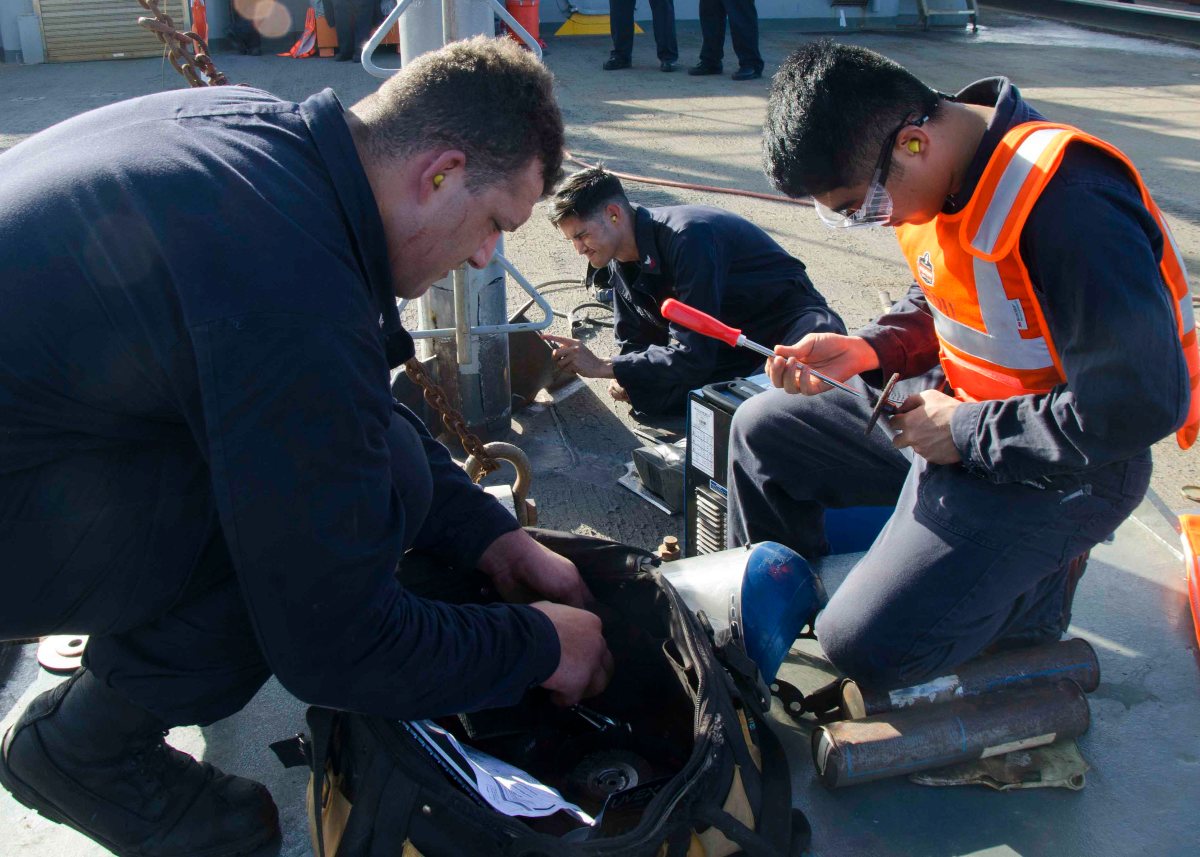
Physical Training Uniforms
The iconic sweat-wear Navy uniforms. The crispy PTU’s contain: gold short-sleeved shirt, blue shorts, athletic shoes and athletic socks. All US Navy members wear the same uniform for physical training. Optional items include: ball cap, long sleeve gold shirt, compression shorts, sweat pants or sweat shirt (navy blue), and more.
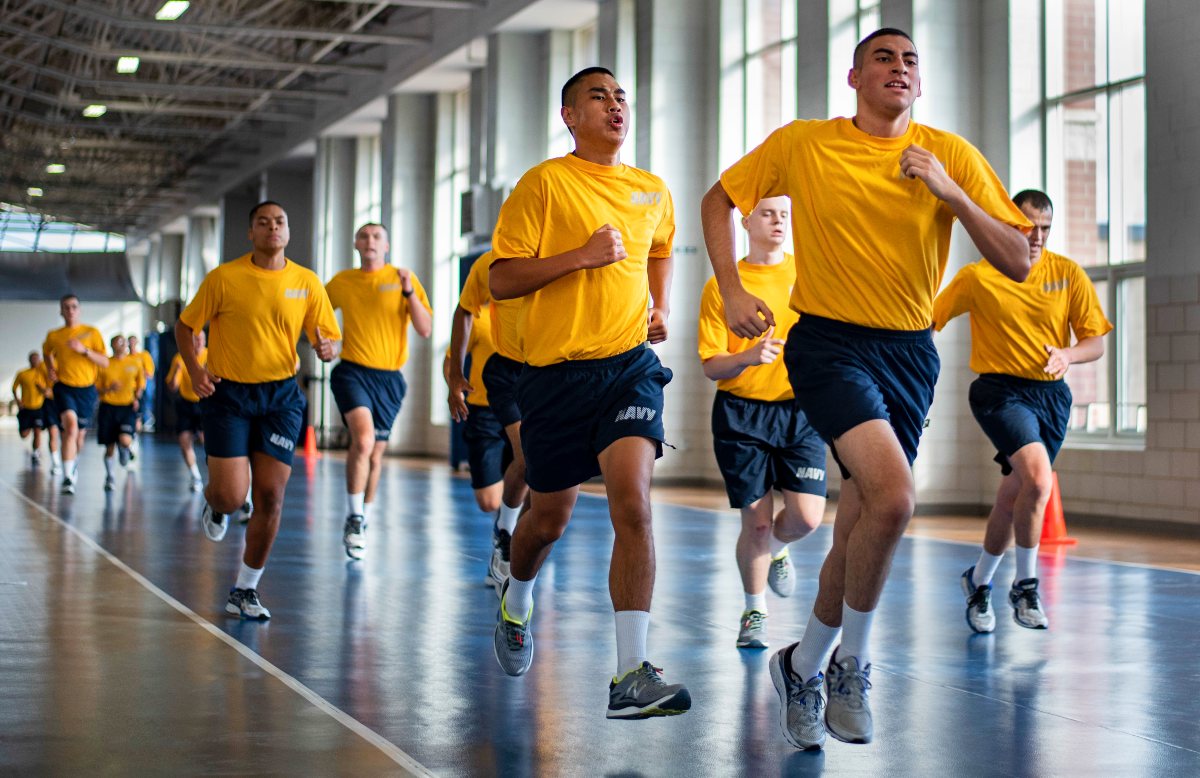
There is a long list of official stipulations regarding PTU’s, but here’s the gist of it:
“The PTU is designed primarily for group/unit physical training activities and the semi-annual Physical Fitness Assessment (PFA); however, it can be worn both on and off base for fitness and/or leisure unless determined otherwise by regional coordinators or commanding officers.”





